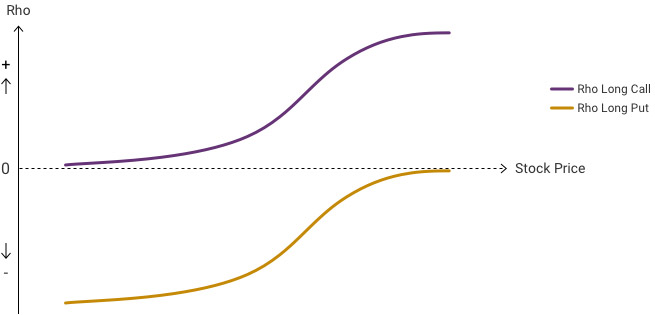Options involve risk and are not suitable for all investors. [+] Show details and the options disclosure document.
Options involve risk and are not suitable for all investors. Certain requirements must be met to trade options. Before engaging in the purchase or sale of options, investors should understand the nature of and extent of their rights and obligations and be aware of the risks involved in investing with options. Please read the options disclosure document titled "Characteristics and Risks of Standardized Options (PDF)" before considering any option transaction. You may also call the Investment Center at 877.653.4732 for a copy. A separate client agreement is needed. Multi-leg option orders are charged one base commission per order, plus a per-contract charge.
The maximum loss, gain and breakeven of any options strategy only remains as defined so long as the strategy contains all original positions. Trading, rolling, assignment, or exercise of any portion of the strategy will result in a new maximum loss, gain and breakeven calculation, which will be materially different from the calculation when the strategy remains intact with all of the contemplated legs or positions. This is applicable to all options strategies inclusive of long options, short options and spreads. To learn more about Merrill's uncovered option handling practices, view
Naked Option Stress Analysis (NOSA) (PDF).
Early assignment risk is always present for option writers (specific to American-style options only). Early assignment risk may be amplified in the event a call writer is short an option during the period the underlying security has an ex-dividend date. This is referred to as dividend risk.
Long options are exercised and short options are assigned. Note that American-style options can be assigned/exercised at any time through the day of expiration without prior notice. Options can be assigned/exercised after market close on expiration day. View specific
Merrill Option Exercise & Assignment Practices (PDF).
Supporting documentation for any claims, comparison, recommendations, statistics, or other technical data, will be supplied upon request.
What is Rho?
Rho measures an option's sensitivity to changes in the risk-free rate of interest (the interest rate paid on US Treasury bills) and is expressed as the amount of money an option will lose or gain with a 1% change in interest rates.
Interest rates can have an impact on an option's value as interest rates can impact the cost of carrying the position over time. One should take into consideration the cost of capital. Since this effect is applicable to cost over time, interest rate changes impact longer term options much more than near-term options. The higher the price of the stock and the longer time until expiration generally means a greater sensitivity to changes in interest rates which equates to higher absolute Rho values.
Rho is positive for long calls (right to buy) and increases with the price of the stock. Rho is negative for long puts (right to sell) and approaches zero as the stock price increases. Rho is positive for short puts (obligation to buy), and negative for short calls (obligation to sell).

For illustrative purposes only.
How is Rho used?
Positive Rho
Rho is positive for purchased calls as higher interest rates increase call premiums.
Long calls give the right to purchase stock, normally the cost of that right is less than the fully exercisable value. The difference of those two numbers could be deposited into an interest bearing account. This makes the call options more favorable in a high interest rate environment.
For Example:
Assume XYZ has a current market price of $50.00
Buying Stock Value: Buy 100 Shares XYZ at $50.00 per Share = $5,000.00 Total Cost ($50.00 x 100 Shares)
Buying Call Option: Buy 1 $50.00 Call at $10.00 Premium = $1,000.00 Total Cost ($10.00 Premium X 1 Contract X 100 Shares)
The total exercisable value of this option is $5,000.00 (right to buy 100 shares at $50.00). The cost to purchase the option ($1,000.00) is less upfront capital than the total exercisable value, the remaining $4,000.00 could be deposited and earn interest. This would be positively reflected in the value of the long call option as interest rates increase.
Negative Rho
Rho is negative for purchased puts as higher interest rates decrease put premiums.
Select to close help pop-up
an investor is in a short position when the investor sells a stock that he or she does not own.
For Example:
XYZ has a current market price of $50.00
Shorting Stock Value: Sell 100 XYZ at $50.00 per Share = $5,000.00 Total Proceeds ($50.00 x 100 Shares)
Buying Put Option: Buy 1 $50.00 Put at $10.00 Premium = $1,000.00 Total Cost ($10.00 Premium X 1 Contract X 100 Shares)
The total exercisable value of this option is $5,000.00 (right to sell 100 shares at $50.00). The cost to purchase the option ($1,000.00) is more upfront capital than the proceeds the total exercisable value would generate. The $5000.00 from the short sale could be deposited and earn interest. This would be negatively reflected in the value of the long put option as interest rates change.
What are other factors to consider?
Interest rate risk is not used in many modern day options tools. Interest rate risk would be applicable in an interest rate environment where the Federal Reserve raises rates by at least 100bps on a regular basis.
Interest rate risk has the greatest effect on longer dated options and is present mainly when holding cash in an interest bearing account is more advantageous. Mainly a concern for LEAP options.
Interest normally moves gradually ~.25%/ quarter. Under normal circumstances it would take a full year to reach a 1% change in interest rates. This of course can change.